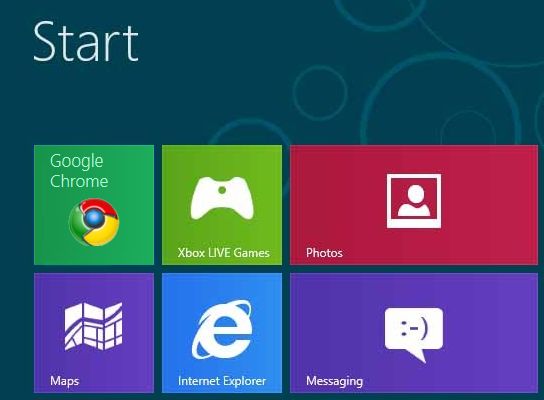Microsoft Committed To Metro User Interface

Microsoft is to stick with its Metro user interface for the foreseeable future according to a number of reports
Microsoft’s minimalist and blocky Metro user interface will remain the signature look for Windows for the foreseeable future, according to various reports.
New details have emerged on an upcoming version of Microsoft’s operating system code-named Windows Blue. An enthusiast at the Taiwanese online forum PCBeta claims that Windows Blue will carry on with its predecessor’s UI and borrow some tricks from Windows Phone 8.
Live Tiles
A PCBeta poster claiming to be an alpha tester for “Windows 9 Dev” offered some hands-on details on Windows Blue. The operating system is rumoured to be part of Microsoft’s effort to provide yearly, affordably priced Windows updates.
The strategy mirrors Apple’s habit of releasing big-cat-themed updates to OS X each year. This summer, Microsoft gave the public a taste of what such a policy could mean for consumers’ wallets when it revealed that upgrading to Windows 8 from XP, Vista or Windows 7 would cost just $40 (£25).
 The PCBeta forum user, posting under the pseudonym “Maxy” stated that Windows Blue will offer more customisation options. Chief among them is the ability to resize Windows 8 Live Tiles.
The PCBeta forum user, posting under the pseudonym “Maxy” stated that Windows Blue will offer more customisation options. Chief among them is the ability to resize Windows 8 Live Tiles.
As on Windows 8 Phone, users will be able to expand the self-updating tiles, giving preferred apps more screen real estate. Live Tiles anchor the Metro UI and are part of Microsoft’s effort to create dynamic tablet home screens and PC desktops that offer at-a-glance notifications and real-time updates.
Metro is Microsoft’s tablet-friendly and touch-enabled take on user interfaces. While it defines the start screen experience for the recently released Windows 8 operating system, several of its elements can be traced back years.
Metro’s distinctive tiled interface, “flat” appearance and typographic flair owe their existence to Microsoft’s work on devices such as the ill-fated Zune digital media player, the popular Windows Xbox gaming and digital media console, and recent editions of Windows Phone. In recent months, the software giant has reeled in its use of the term Metro under a cloud of potentially costly legal consequences.
In August, Microsoft brushed off the Metro brouhaha as just another example of a product code name that gets dropped as a release date approaches.
The company told the All About Microsoft blog, “We have used Metro style as a code name during the product-development cycle across many of our product lines. As we get closer to launch and transition from industry dialogue to a broad consumer dialogue, we will use our commercial names.”
Kernel Upgrade
Nonetheless, Metro still resonates and today it is at the heart of the buzz surrounding the next Windows release.
According to a BGR post, a kernel upgrade to version 6.3 is also in the works. Windows diehards will still have access to the traditional, icon-based desktop, although it appears the Windows developers at Redmond aren’t finished “flattening” the UI and exorcising the last bits of gloss that have clung to the OS since Vista and Windows 7.
Think you know Windows? Try our wonderful Windows quiz!
Originally published on eWeek.